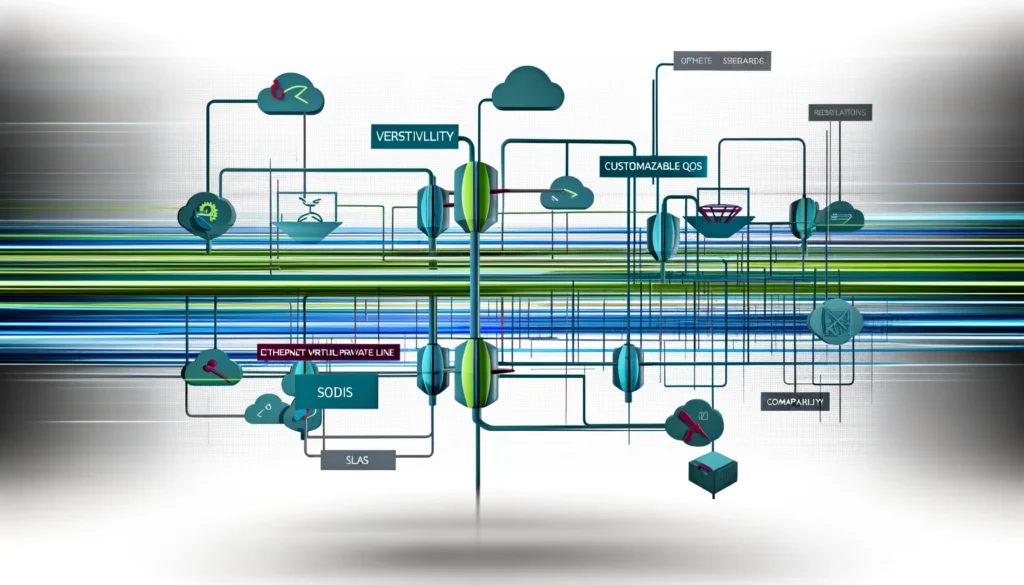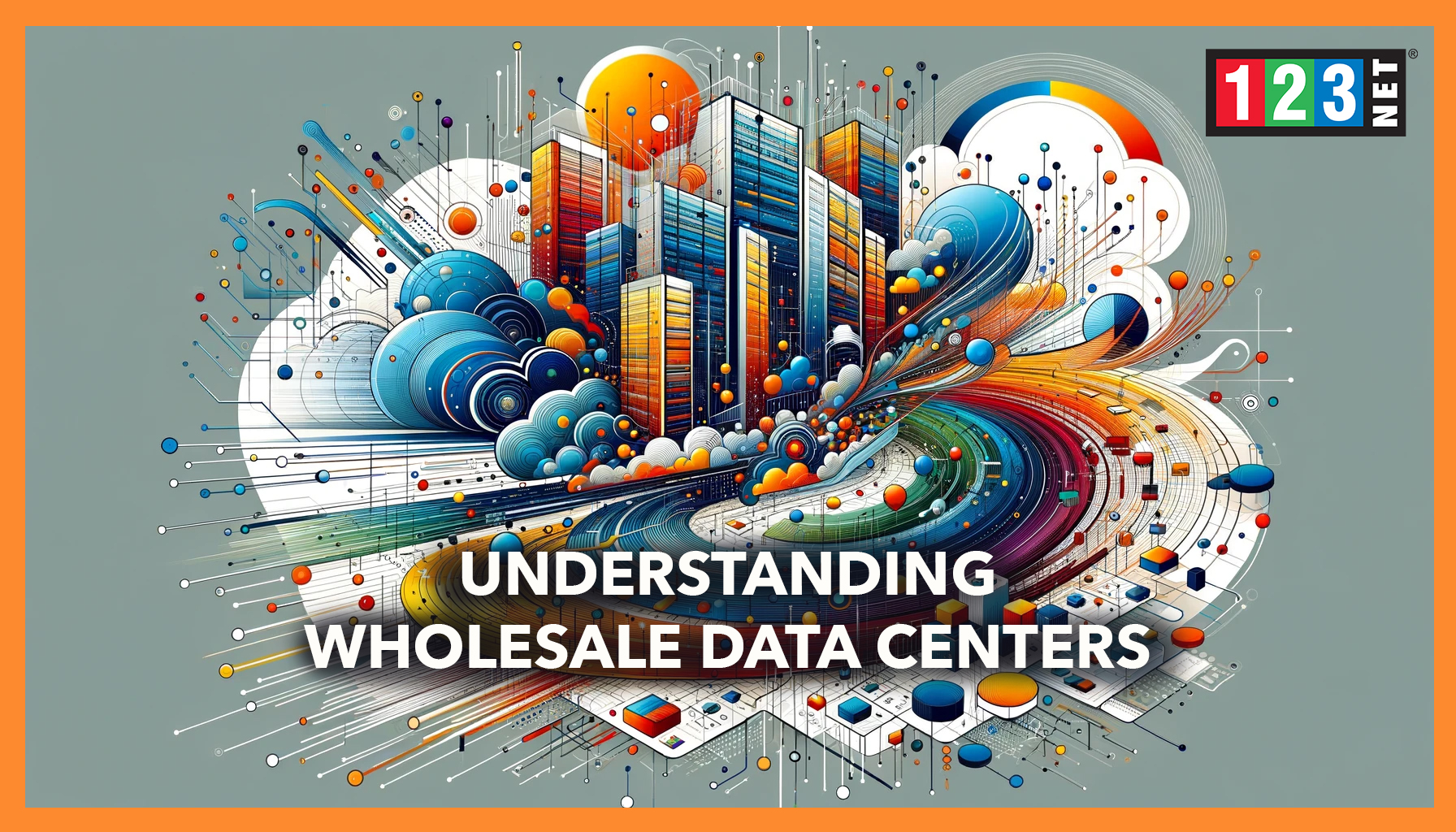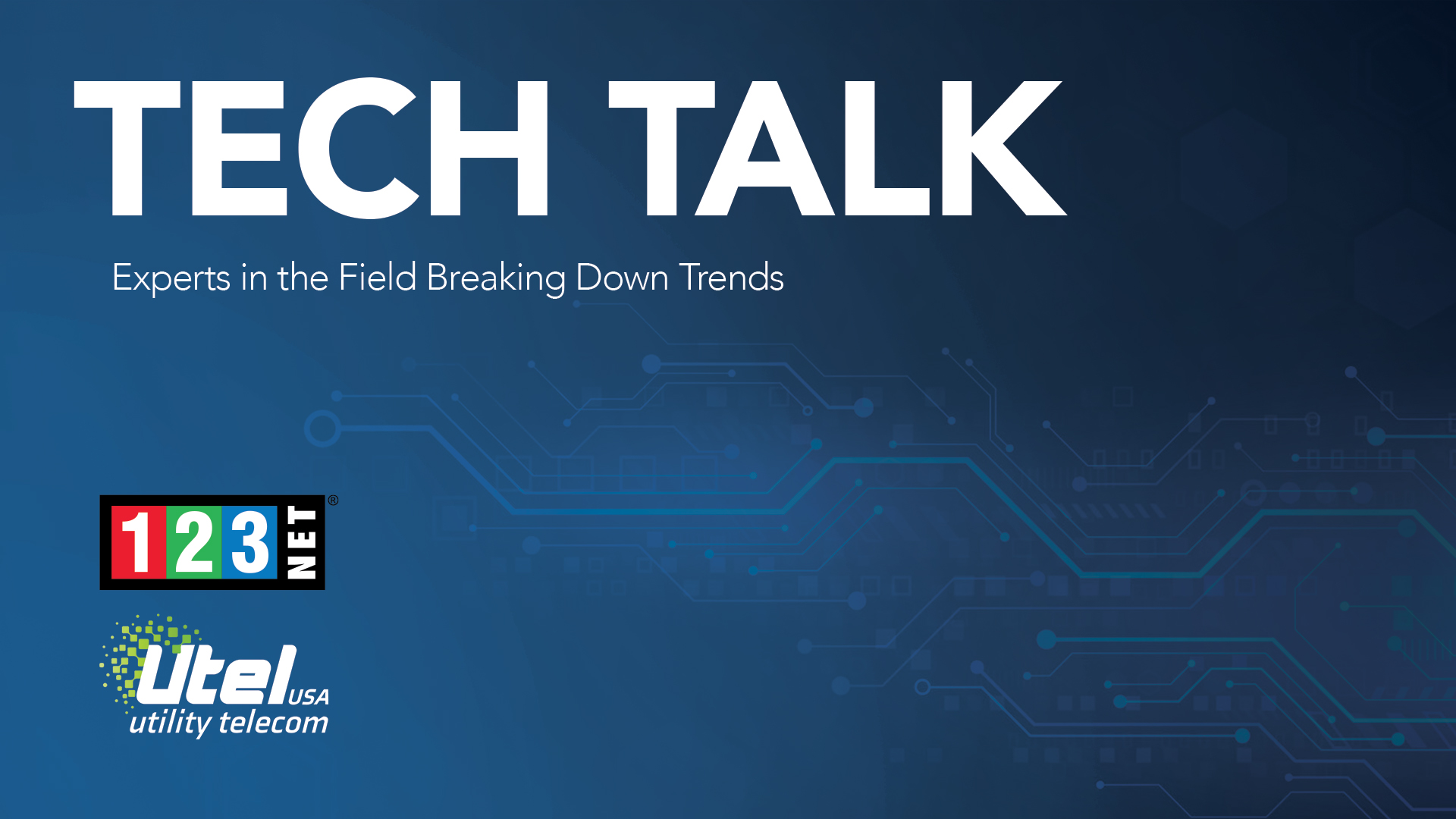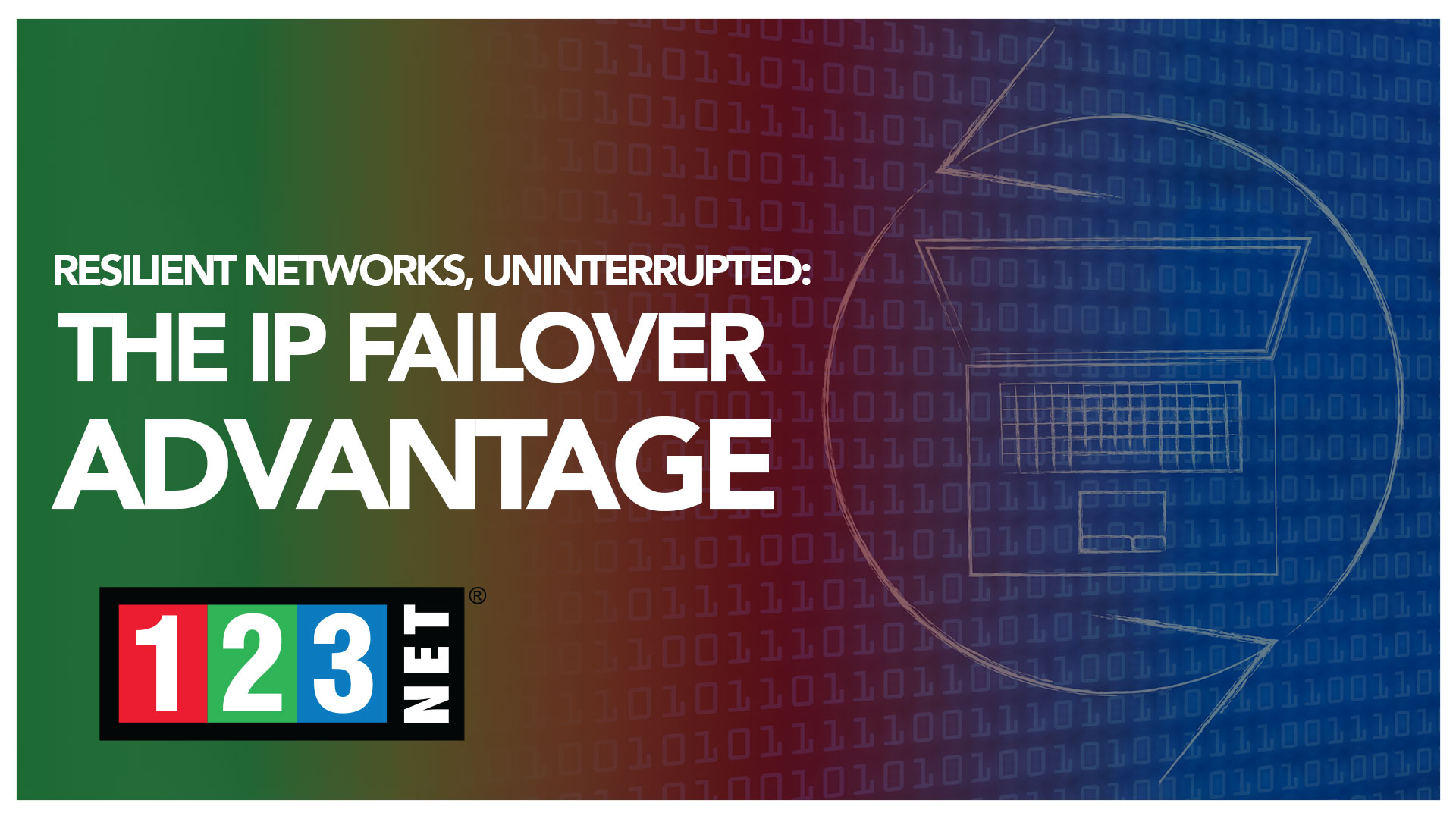
Introduction
In the Ethernet services landscape, Ethernet Virtual Private Line (EVPL) emerges as a key player for contemporary network demands. It enables strong, scalable, and secure data sharing across distances. EVPL combines flexibility and efficiency, perfect for businesses aiming to enhance their networks. With digital transformation on the rise, grasping EVPL’s details is essential. This piece explores EVPL, contrasting it with Ethernet Private Line (EPL), and outlines its advantages, technical aspects, and deployment methods. It’s a technology that supports varied bandwidth needs and prioritizes data security, making it a top choice for forward-thinking organizations.
Understanding Ethernet Virtual Private Line (EVPL)
Ethernet Virtual Private Line (EVPL) stands as a transformative network service, offering point-to-multipoint connectivity. This feature allows businesses to link multiple locations via a singular connection, streamlining communication. Diverging from traditional point-to-point Ethernet services, EVPL utilizes service multiplexing. This approach enhances data transmission, boosting both network efficiency and scalability. Such a system supports diverse bandwidth management strategies, ensuring networks operate at peak performance and reliability.
EVPL’s architecture provides a cost-effective means for organizations to broaden their network’s reach. It does so without sacrificing the quality of service (QoS) or compromising security measures. By adhering to established Ethernet standards, EVPL seamlessly integrates with existing network infrastructures. This compatibility supports a broad spectrum of applications, ranging from Dedicated Internet Access (DIA) to intricate IP/MPLS VPN setups.
The technology’s ability to offer flexible bandwidth options caters to varying organizational needs. Whether it’s a small enterprise requiring modest bandwidth or a large corporation needing extensive data throughput, EVPL adapts accordingly. Its service multiplexing feature allows for multiple virtual connections over a single physical interface. This efficiency reduces the need for extensive hardware investments, lowering operational costs.
Moreover, EVPL’s emphasis on quality of service ensures that critical applications receive the bandwidth and priority needed for smooth operation. This prioritization is crucial for businesses relying heavily on real-time data exchange and applications requiring consistent connectivity. The security features inherent in EVPL, such as encryption and secure tunneling protocols, provide an additional layer of protection. These features safeguard sensitive data as it traverses the network, a vital consideration in today’s cyber-threat landscape.
EVPL vs. EPL (Ethernet Private Line)
When comparing Ethernet Virtual Private Line (EVPL) with Ethernet Private Line (EPL), the advantages of EVPL become clear, especially in terms of flexibility and scalability. EPL offers a straightforward point-to-point connection, ideal for direct, dedicated links. However, EVPL introduces a more dynamic point-to-multipoint setup. This setup facilitates service multiplexing, a feature that allows businesses to distribute bandwidth efficiently across various locations. Such a capability not only leads to cost savings but also streamlines the overall network design.

Flexibility
The flexibility of EVPL extends to its application range, making it a fitting choice for diverse networking scenarios, including Metro LAN and WAN VPLS environments. This adaptability is further enhanced by its support for dynamic bandwidth allocation. With this feature, companies can easily adjust their bandwidth requirements in response to fluctuating demands, ensuring their network remains efficient without the need for extensive modifications.
Quality of Service
Moreover, EVPL’s sophisticated Quality of Service (QoS) mechanisms play a crucial role in data prioritization. By ensuring that critical applications receive the bandwidth they need, EVPL maintains optimal performance levels, even when the network is under significant stress. This prioritization is essential for businesses that rely on real-time data access and high-speed communications.
The architecture of EVPL also simplifies network management. By consolidating multiple virtual connections over a single physical link, it reduces the complexity and cost associated with maintaining numerous dedicated lines. This consolidation is particularly beneficial for organizations with extensive networks spanning multiple locations.
Scalability and Security
In addition to its operational benefits, EVPL’s scalability is a key advantage. As businesses grow and their data needs evolve, EVPL can scale accordingly. This scalability ensures that enterprises can expand their network capabilities as needed, without encountering the limitations often associated with traditional EPL services.
Furthermore, the enhanced security features of EVPL, including advanced encryption and secure tunneling protocols, provide an added layer of protection for data in transit. This security is crucial in today’s digital landscape, where data breaches and cyber threats are increasingly common.
Benefits of Ethernet Virtual Private Line
The advantages of Ethernet Virtual Private Line (EVPL) are numerous and significant for businesses aiming for growth and efficiency. One of the primary benefits is its scalability, which allows companies to extend their network reach as their requirements evolve, without necessitating large initial investments. This scalability is crucial for businesses in today’s fast-paced environment, where the ability to quickly adapt to changing demands is a key competitive advantage.
Adaptability
Flexibility is another cornerstone of EVPL, offering tailored solutions to meet the diverse needs of organizations. Whether it’s managing bandwidth more effectively or enhancing data transmission security, EVPL can be customized to address specific challenges. This adaptability ensures that businesses can optimize their network performance to support various applications and services, from cloud computing to remote collaboration tools.
Cost-Effective
Cost-effectiveness stands out as a significant benefit of EVPL. Through service multiplexing, it enables more efficient use of network resources, minimizing unused capacity and thereby reducing costs. This efficiency not only lowers operational expenses but also contributes to a more sustainable use of technological resources.
Security and Protection
Moreover, the security features embedded in EVPL offer comprehensive protection for data in transit. With advanced encryption and secure tunneling protocols, EVPL ensures that sensitive information remains confidential and safe from unauthorized access. This level of security is especially important in an era where cyber threats are increasingly sophisticated and pervasive.
In addition, EVPL’s support for Quality of Service (QoS) guarantees that critical business applications receive the bandwidth and priority needed for uninterrupted operation. This ensures that high-priority tasks, such as video conferencing and real-time data analytics, perform reliably, enhancing overall productivity.
The combination of scalability, flexibility, cost-effectiveness, and robust security makes EVPL an attractive option for businesses looking to modernize their network infrastructure. By adopting EVPL, companies can achieve a more resilient, efficient, and secure networking environment, poised to meet the demands of the digital age.
Technical Specifications of EVPL
Ethernet Virtual Private Line (EVPL) is tailored to cater to the nuanced requirements of contemporary businesses. It accommodates an extensive spectrum of bandwidth needs, ranging from modest connections suitable for small offices to robust links designed for bustling data centers. This versatility ensures that organizations of all sizes can find a solution that matches their specific operational demands.
One of the standout features of EVPL is its customizable Quality of Service (QoS) settings. These allow network administrators to meticulously prioritize various types of network traffic. By doing so, they ensure that essential applications receive the bandwidth necessary for optimal performance. This capability is particularly beneficial for supporting critical operations that rely on uninterrupted network access.
Reliability forms the backbone of the EVPL offering. Service Level Agreements (SLAs) provide businesses with assurances regarding network uptime and overall performance. Such guarantees are vital in today’s digital landscape, where even brief periods of downtime can lead to significant losses. These SLAs offer peace of mind, knowing that the network is dependable and resilient against disruptions.
Moreover, EVPL’s alignment with established Ethernet standards simplifies the process of integrating new network solutions with existing infrastructure. This compatibility is a boon for companies aiming to enhance their network capabilities without undergoing a complete system overhaul. It allows for a smoother transition to more advanced networking technologies, minimizing potential disruptions to daily operations.

Implementing EVPL in Your Network
Implementing Ethernet Virtual Private Line (EVPL) is a strategic process that demands meticulous planning and thoughtful consideration. Initially, it’s imperative to evaluate both present and anticipated network requirements. This evaluation encompasses bandwidth needs, the importance of various applications, and security measures. Such a comprehensive assessment is foundational for selecting an appropriate vendor. In this selection phase, the reliability of the service, customer support quality, and the technical prowess of the provider are paramount considerations.
Choosing a vendor is not merely about the services offered but also about ensuring a partnership that aligns with your business’s values and expectations. This alignment is crucial for a smooth implementation process and long-term satisfaction. Once a vendor is selected, the focus shifts to integrating EVPL into the existing network infrastructure. Despite EVPL’s inherent flexibility and its ability to integrate with minimal fuss, compatibility checks with existing hardware and software are indispensable.
Collaboration with the chosen vendor is vital during the deployment phase. A well-structured deployment plan, co-developed with your vendor, aims to reduce any potential downtime significantly. Moreover, such a plan is designed to enhance overall network performance, ensuring that the transition to EVPL is as seamless as possible. This phase often involves detailed technical discussions, during which the specifics of the EVPL service are tailored to fit the unique needs of your network.
Furthermore, the deployment plan should include a comprehensive testing phase. This phase is critical to identify and rectify any issues before the EVPL service goes live. By thoroughly testing the service in a controlled environment, businesses can ensure that the EVPL integration will not disrupt existing operations.
FAQs Section
- What is the difference between EVPL and MPLS? A: EVPL is an Ethernet-based service focusing on point-to-multipoint connectivity, while MPLS is a protocol-agnostic technique that directs data from one network node to the next based on short path labels rather than long network addresses.
- Can EVPL support international connections? A: Yes, EVPL can be configured to support international connections, making it suitable for global businesses.
- How does EVPL enhance data security? A: EVPL includes built-in security features such as encryption and secure tunneling to protect data during transmission.
- Is EVPL suitable for small businesses? A: Absolutely, EVPL’s scalability and cost-effectiveness make it a viable option for businesses of all sizes.
This guide highlights the importance of Ethernet Virtual Private Line (EVPL) in today’s networking landscape. It delves into the advantages, technical details, and deployment tactics of EVPL. Known for its flexibility, efficiency, and robust security, EVPL is pivotal for companies looking to enhance their network infrastructure. It serves as a key technology, enabling businesses to adapt to evolving demands while maintaining high performance and data protection. Through this exploration, the guide showcases EVPL as an essential solution for modern enterprises seeking to optimize their networking capabilities and secure their digital assets.




